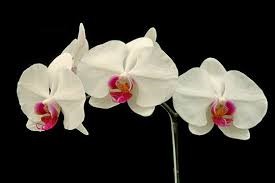By Charlene Beach
As a child, I remember spending my summers in Hawaii helping my grandfather and watering his many orchids. I didn’t realize it at the time, but the hours spent performing this family chore would create a fondness for orchids, albeit decades later in my Montgomery home.
For most, orchids have the reputation of being difficult to grow, but several of these exotic and glamorous plants are really quite easy to care for once the basics are mastered. If you are like many, your first orchid was a gift, and you diligently followed the growing instructions on the plant label but to no avail. Unfortunately, labeling information tends to be very general and not overly helpful for the beginner. However, you can achieve success in growing some of nature’s most spectacular plants if you follow a few simple and basic guidelines.
Orchids for beginners: Moth orchids (phalaenopsis) are the most popular, easiest to grow and highly recommended for the novice. They offer what we all love about orchids; they bloom for long periods of time (weeks to months), they come in numerous colors, they have lush green foliage, and they are well suited to most home environments.
Select a healthy plant: Buying an orchid is no different than buying any other plant. You would not purchase a plant that has discolored or wilted leaves or evidence of insects, mites, fungi, or bacteria. The same is true when buying an orchid. Unlike most plants, the roots of an orchid are visible because they are epiphytes, so examine the roots to be sure they are not mushy or unusually dark (black) in color.
The environment: Selecting an orchid that is suitable for your region is also important but can be difficult because there are literally thousands of different types of orchids available. An orchid that is found in a tropical rain forest is probably not going to do well in the desert conditions of the southwest. With this in mind, is a suitable environment readily available in your home or do you want to create an environment by controlling light, temperature, and humidity. Remember, there are limits to modifying the growing environment and, for the beginner, it is probably best to select an orchid that is suitable for the current home conditions.
Caring for your orchid: The orchid you purchase and bring home has to adjust to its new surroundings. Recreating the green house environment in which it was grown is not necessary, but the less stress during this transition the better. Be sure there is sufficient light with the appropriate temperature and humidity. A window with a south or east exposure is preferred. Temperatures should range between 70-80 F degrees (day) and 55-65 F degrees (night) with a relative daytime humidity of 40-70 percent. Gentle air movement is also necessary to cool the leaves and aid in the evaporation of water on the plant, thereby reducing the risk of disease. A ceiling or oscillating fan is a great way to keep the air moving.
For the novice, providing the appropriate amount of water can be challenging because there are so many variables to consider—temperature, humidity, potting medium, type of pot, etc.—but the problem of overwatering occurs more often. Water thoroughly when the medium is dry to the touch. You can also use a sharpened pencil to determine if it is time to water. Insert it one inch into the medium and turn it a few times. If the pencil comes out damp you do not need to water. If the pencil is dry, it is probably time to water.
When it comes to feeding your orchid, it is probably best to feed it every time you water it using a water-soluble fertilizer half the strength recommended on the label. Over the years, I have had the best results using fertilizers specifically formulated for orchids.
Resources: For more information about orchids, the books and periodicals in your local library are a great place to start. Members of garden clubs, master gardener associations, and orchid societies can answer your questions as well as the staff of your local county extension service.
Charlene Beach, an Intern in the 2016 Master Gardener Class, lives in Montgomery. For more information on becoming a master gardener, visit www.capcitymga.org or email capcitymga@gmail.com.
 Part of the Alabama Cooperative Extension Service (ACES)
Part of the Alabama Cooperative Extension Service (ACES)
